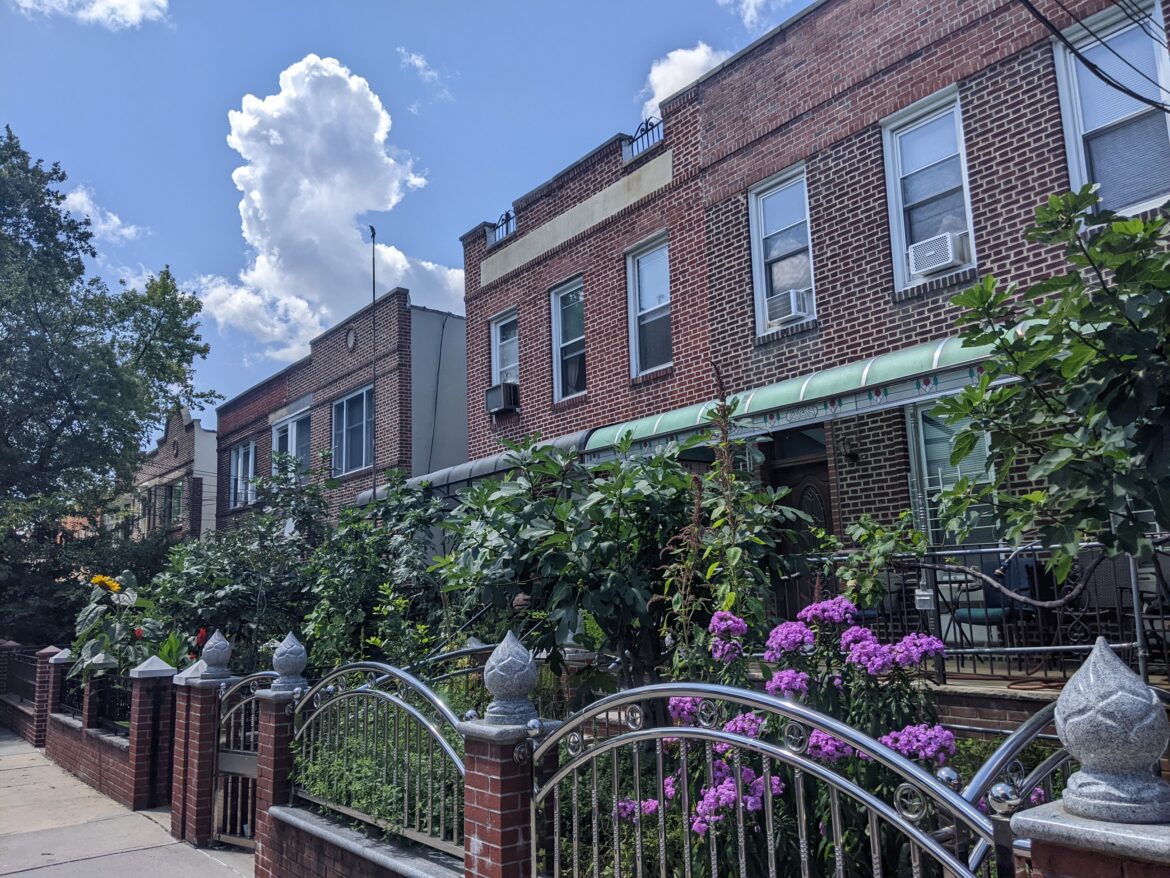
“It’s remarkable that a city as diverse as New York isn’t doing more to honor that diversity by planting a greater variety of public fruit trees that reflect the people who live there.”

Thanks to Jordan Engel
Fig trees in Astoria, Queens.

City view are the opinions of readers, not those of City Limits. Add your vote today!
Fig season in Astoria is hard to miss. If you’re walking down a sidewalk, you’ll likely come across a neighbor harvesting figs in their front yard. If you’re lucky, they’ll press a soft, perfectly ripe specimen into your hand and send you a few more home to share. Although you can find fresh figs at local markets, they tend to be expensive because they are not grown commercially in the region. Despite, or perhaps because of, their value, the local fig trade functions predominantly as a gift economy, so to speak Robin Wall Kimmerer“the habit of dealing with abundance is giving it away.”
It’s a kind of community spirit that’s more common in rural villages than a dense urban neighborhood, but has blossomed in post-pandemic Astoria through grassroots initiatives like community-run community spirit. food supply and free store. These trees act as nodes in a larger network of mutual care that transforms the neighborhood.
As an urban planner and horticulturist who wanted to get a better sense of the scale and distribution of these community assets, I spent the season cycling up and down Astoria’s grid, taking a census of the fig trees and speaking to their managers along the way. What I discovered was remarkable: there were more than 400 plots where figs were grown, mostly just in the front gardens.
There are undoubtedly hundreds more hidden in private gardens and backyards. With some properties home to as many as six trees, the total number of fig trees in Astoria is likely well into the thousands – an extraordinary amount considering that Astoria is not a particularly green neighborhood, with figures like canopy and green space coverage per capita. But between the brick and the concrete lies a surprising secret: Astoria might be the Big Apple’s unofficial fruit basket, thanks in large part to its main crop: the fig.
By talking to fig farmers when they happened to be tending the trees, I learned the origins of many trees. “My father brought this cutting from Greece,” a woman told me as she watered her garden. It’s a story I heard repeated, with slight variations. Astoria is a neighborhood of immigrants, and these fig trees have traveled from their Mediterranean homelands – places like Greece, Morocco, Italy, Egypt and Palestine – carefully packed in the luggage of emigrants in the hope of maintaining a connection to their homeland.
Because figs root easily from cuttings, they are some of the few fruit trees that can survive the journey. Many of the trees here are heirloom varieties, unlikely to be found anywhere else in America. Each fig cultivar I received this season had a unique quality: flavor, shape, texture, color. The diversity of Astoria’s figs reflects that of the surrounding human community; Queens is one of the most culturally diverse places on earth. And because they reproduce so easily, new generations of these cultivars are spreading in Astoria, many to neighbors from Asia and Latin America with no specific tradition of fig growing in the past. Collectively, many Astoria neighbors are learning to love this fruit and the community bonds it brings. The fig trees are both living connections to the past and new connections in the present
In many ways, the fig is the ideal fruit tree for our urban environment. First, it is productive: a mature tree can produce up to 40 kilos of fruit in a good year. It is self-fertile, drought tolerant, disease resistant and impervious to most pests. Unlike many fruit trees, figs do not easily drop their fruit to the ground, where they could attract rats.
They require little horticultural expertise to grow. Traditionally, the most labor-intensive part of growing figs in New York has been wrapping saplings annually to protect them from our cold winters. Even that wasn’t always enough, like when the New York Times reported on widespread fig diebacks in the region following the harsh winter of 2014. But as the climate crisis intensifies, there is a silver lining in the fact that figs, once on the brink of survival here, are now thriving. The local growers I spoke with said there hasn’t been a major fig die-off in recent years, and many have stopped packing their trees, making fig growing even more accessible.
In my informal research of Astoria, the most surprising discoveries were the many fig trees that were not found on private property, but were planted in apartment building courtyards, business parking lots, cemeteries, sidewalk cafes, and on the campus of Astoria’s largest cooperative housing complex. These places are part of the urban commons: areas that are technically privately owned, but serve as shared spaces for the community.
The fig trees in this commons operate in the same spirit as the gift economy. Just as a neighbor would hand you figs from their tree, these trees offer their fruit to passersby for all to enjoy for free. Although private fruit trees contribute to Astoria’s informal gift economy, this system still depends on the generosity of their owners. A more democratic and equitable system of urban agriculture would provide open access to fresh produce, regardless of relationships or ownership.
For all their abundance, there’s one place in Astoria where figs—and fruit trees in general—are conspicuously absent: city-owned land. The neighborhood’s love of figs has not led to their integration into local tree beds, parks, schoolyards, playgrounds, or on NYCHA’s four major nearby campuses.
This is a missed opportunity. By supporting local food systems and public fruit tree plantings, the city can increase the benefits of Astoria’s informal system. It is not without precedent: fruit trees are a defining feature of the public sphere in cities like Seville, Spain, where 14,000 orange trees align the streets. There are some in the US 85 community food forests in cities from Boston to Atlanta to Seattle, and more in development.
New York was a late adopter, but in 2017 the city launched its first legal foraging area with the Bronx River Foodway pilot program in the Concrete Plant Park. After seven years of growth, many trees and shrubs are now beginning to bear fruit. On a recent visit, I watched a father teach his daughter to pick raspberries without being pricked by thorns. A curious stranger approached them and after conversation joined them at the harvest. Despite the program’s apparent success in connecting people to community and land, the Parks Department has yet to replicate it and forage on public lands. remains illegal in the rest of the city.
There are 76 species in the city official list of approved street tree species. Of these, the blueberry is the only one that produces sweet, edible fruit. It’s remarkable that a city as diverse as New York doesn’t do more to honor that diversity by planting a greater variety of public fruit trees that reflect the people who live there. Just as the fig has become a living embodiment of Astoria’s cultural landscape, jujubes, guavas or persimmons can serve a similar role in other communities.
There are signs of progress. Last spring, the first pawpaw street trees in New York City were quietly planted in Astoria, despite the fact that they are not technically sanctioned by the city’s official guidelines. Maybe this is another pilot program? Can we hope that our public places will be filled with more trees, offering fresh food for everyone to pick for free? Astoria’s fig trees provide a blueprint for what is possible when we rethink how we use our urban land to create a more equitable, livable, and resilient city for all.
Jordan Engel is a recent graduate of Hunter College’s Master of Urban Planning program and former orchard designer.
Leave a Reply